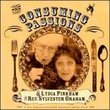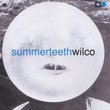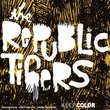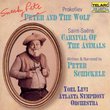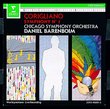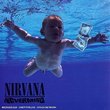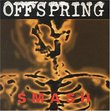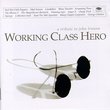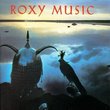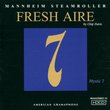| All Artists: Joseph Jongen, Camille Saint-Saens, Eduardo Mata, Dallas Symphony Orchestra, Jean Guillou Title: Jongen: Symphonie Concertante; Saint-SaŽns: Symphony No.3 Members Wishing: 0 Total Copies: 0 Label: Dorian Recordings Release Date: 7/26/1994 Genre: Classical Styles: Chamber Music, Forms & Genres, Concertos, Historical Periods, Classical (c.1770-1830), Symphonies Number of Discs: 1 SwapaCD Credits: 1 UPC: 053479020024 |
Search - Joseph Jongen, Camille Saint-Saens, Eduardo Mata :: Jongen: Symphonie Concertante; Saint-SaŽns: Symphony No.3
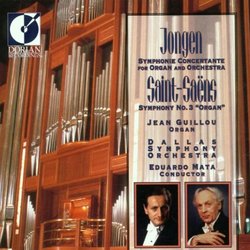 | Joseph Jongen, Camille Saint-Saens, Eduardo Mata Jongen: Symphonie Concertante; Saint-SaŽns: Symphony No.3 Genre: Classical
Fans of Saint-Saens's Organ Symphony are always on the lookout for a worthy sequel, and in fact there are several. Widor wrote a stunning symphony for organ and orchestra that still awaits a first class digital recording... more » |
Larger Image |
CD DetailsSynopsis
Amazon.com Fans of Saint-Saens's Organ Symphony are always on the lookout for a worthy sequel, and in fact there are several. Widor wrote a stunning symphony for organ and orchestra that still awaits a first class digital recording, and there's also this legendary piece. Jongen was an expert Belgian composer who wrote some very fine music. This is his only major effort to receive international attention, and it really is a logical successor to Saint-Saens's masterpiece, being a very satisfyingly crafted work in four tuneful movements. Not only is it superbly performed and recorded here, it comes with what is probably the best modern recording of the Saint-Saens as well. --David Hurwitz Similar CDs
Similarly Requested CDs
|
CD ReviewsThe Jongen Toccata is way too fast David M. Fox | Port Orchard, WA United States | 09/01/2003 (3 out of 5 stars) "My review addresses only the Jongen Piece - this is the only recording of the Saint-Saens that I have heard, so I have no real basis on which to compare it.The first three movements of the Jongen Symphonie Concertante sound very good, and are perhaps equal to the quality of the 1984 Telarc recording of this piece featuring the San Francisco Symphony/Michael Murray, Organ/Edo DeWaart, conductor. Unfortunately, the overall effect is ruined by the simple fact that the Tocatta is taken at too fast a tempo. The indicated tempo is Allegro Moderato, but organist Jean Guillou starts it almost Presto and conductor Eduardo Mata keeps it there. It sounds like they just wanted to get through it fast, or perhaps they were trying to impress the audience with the speed at which it could be played, but the quick tempo obscures the grandeur of the climax. What is ordinarily a grand dramatic crescendo over the last half of the Tocatta sounds like a 33 rpm LP record played at 45 rpm - the effect is that bad. This turns one of the most dramatic climaxes in music into a rapid presentation of bombastic chords that stop making musical sense. This is a terrible misinterpretation of Jongen's masterpiece, and though this CD may be important for the Saint-Saens recording, I cannot recommend it for the Jongen Symphonie Concertante. The Telarc/San Francisco Symphony recording is superior - buy that CD if you want the best interpretation of the Jongen piece. My review of that disc is available on Amazon.com." A great composition marred by a poor interpretation Classic Music Lover | Maryland, USA | 03/05/2007 (1 out of 5 stars) "The focus on the reviews of this recording rightly centers on the Jongen Symphonie Concertante, surely THE most towering work for organ and orchestra. As late as 25 years ago, this piece was heard hardly at all -- and was championed only by organist Virgil Fox, who also made the first commercial recording of the piece back in the 1960s. Today, the work has achieved mild "cult" status, and is actually performed in quite a few places by the major symphony orchestras (e.g., Minneapolis, Dallas, San Francisco, Chicago, Atlanta, DC, etc.). And there have been at least nine commercial recordings that I've heard, so we now have a good selection of recorded performances to choose from. Unfortunately, in the case of the present recording, the sonic splendors of the Dallas Symphony and Dorian are wasted in a self-indulgent interpretation by the organist. He seems to be trying to win a contest to play the work as fast as humanly possible -- and to out-run the orchestra in the bargain. Not to be caught short at the finish line, Mata and the Dallas players gamely play "catch the organist," but the effect is close to chaotic -- and does nothing to illuminate the brilliant flow of the work that Jongen has so masterfully woven into his composition. To hear the difference a really good performance makes, you can select any number of alternate interpretations -- best in my view are the Murray/deWaart/San Francisco Symphony (on Telarc); Hauk/Ibarra/Ingolstadt Philharmonic (on Guild); Wedd/Bernardi/Calgary Philharmonic (on CBC -- deleted at present); or the "old faithful" Fox/Pretre/Paris Opera Orchestra first recording (EMI -- deleted, but you can get hold of a later live performance Fox did with the NHK Japan Symphony under Heinz Wallberg by going to www.cafepress.com; that performance is mighty fine also). Listen to any of these alternatives, and you'll see how much more musical depth and insight are brought out by the performers, and the effect is revelatory. By comparison, this performance is interpretively hidebound while tempi are rushed throughout -- and the result is hugely disappointing. I keep this CD on my shelf to use as "Exhibit A" when demonstrating what can happen to a composer's work when performers throw thoughtful interpretation away in favor of engaging in the musically adolescent game of "anything you can play, I can play faster."" Great recording - Less than great interpretation Maryland Maestro | Maryland USA | 07/18/2003 (3 out of 5 stars) "I looked forward to this recording based on previous reviews only to find myself disappointed upon listening to it. In terms of sheer sound, this CD does indeed qualify as an audiophile recording but I found the orchestra sound distant and the organ sound way too bass heavy. It seemed to me that Dorian was trying to faithfully capture the sounds of the 32-foot pipes which indeed they did, but other aspects of the sound spectrum suffered.As an organist who has studied and performed both works, I felt that Guillou's approach to the Jongen somewhat schizophrenic. He seemed faithful to the dynamics and changes in tempo, but oblivious to Jongen's indicated registrations. I felt that the organ sound did not match that of the orchestra; this is an impressionistic piece played on a neo-baroque organs with a "French" division called "Resonance". I also noted a pedal registration which was just too heavy on deep bass. Guillou's breakneck tempo on the Toccata deprived the listener of the rich harmonic progressions but did display a fantastic technique.I did appreciate that Guillou approaches the Saint-Saens as a symphony and not a concerto and thus takes great pains to blend in. I would have liked a little more organ sound in the fourth movement. On my audiophile system the drums seemed to stand out too much.I am hoping that EMI releases Virgil Fox's monumental 1950's/1960's Jongen recording as, to my ear, he gets it right in terms of registration and tempo, despite a lot of extra organ playing not in the score. Michael Murray's approach (Telarc) is a fine performance and will remain my favorite on CD."
|

 Track Listings (8) - Disc #1
Track Listings (8) - Disc #1